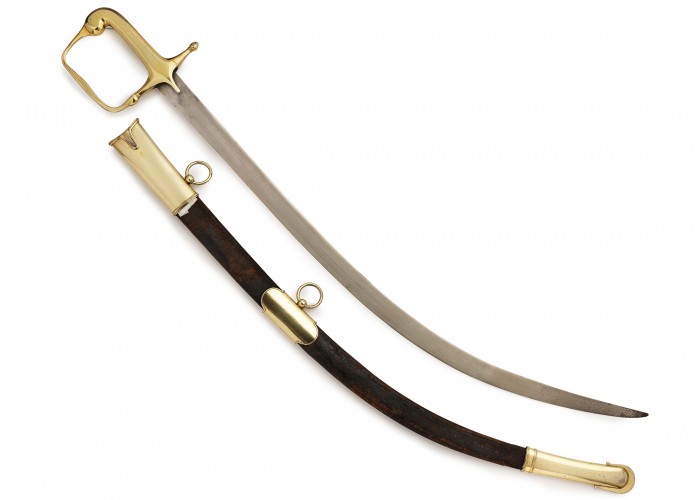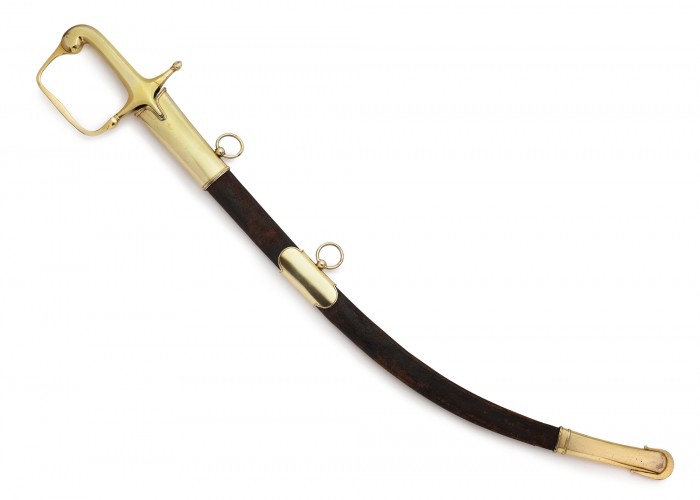Duke of Wellington’s Waterloo Sword
This is the sword carried at the Battle of Waterloo by the Duke of Wellington, supreme commander of the Anglo-Allied army. Although beautifully made, it is not an ornamental item, but a dangerous weapon, a version of the British light cavalry sabre.
Officers carried swords as a mark of rank, but they might also need them for personal defence – particularly cavalry commanders, who often led their charging troops from the front. British casualties at Waterloo included many senior officers, with five generals being killed, including Sir Thomas Picton.
Wellington did not expect to fight personally on the battlefield, but he was an extremely active and energetic commander. During the Battle of Waterloo, Wellington constantly moved around the lines of the Anglo-Allied army on horseback, giving orders to officers personally rather than relying on his subordinate commanders.
Using an elm tree on the crossroads at the top of the Mont St. Jean ridge as the site of his command post, Wellington and his aides galloped from Hougoumont Farm to the Brussels road during the course of the battle. Twice he was almost caught by a French cavalry charge, and was forced to take shelter inside a square of British infantry for protection.
At 8.30pm in the afternoon, after the French Army finally began to retreat, Wellington drew this sword and waved it to signal a general Allied advance. The scene became famous and was immortalised in many paintings of the battle.
-
Curatorial info
- Originating Museum: Apsley House
- Material: Steel, brass, leather
-
Use this image
You can download and use the high resolution image for use in a non-profit environment such as a school or college, but please take note of the license type and rights holder information below
- Rights Holder: Copyright Apsley House / English Heritage. Photography Relic Imaging Ltd.
- License Type: Creative Commons
Find it here
This object is in the collection of Apsley House – English Heritage









